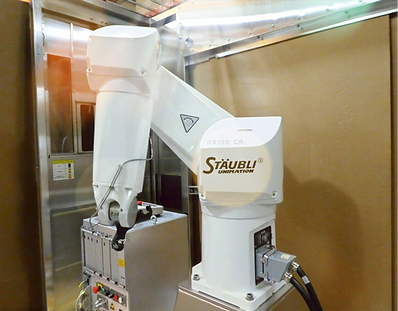
Specialty Polymers
Your solution for high performance engineering themoplastics
Our Process:
Displacement Intrusion Molding

Displacement Intrusion Molding (DIM) is an extremely energy efficient process capable of molding ultra-high performance engineering thermoplastics into large dimensions and cross-sections not obtainable by traditional molding methods such as injection, compression or extrusion molding. Through lab and field testing, part quality and crystallinity from the DIM process have been demonstrated to be significantly greater than those of conventional molding methods. Also, unlike compression molding, the DIM process uses pellets and not powder, yielding superior results in large cross-sectional areas and thicknesses. The use of pellets is significant, especially when there is a need for filled grades and fiber orientation. This also allows the DIM process to be very clean and energy efficient.
In some applications, DIM has been able to produce parts that show a 400% to 900% improvement in service life over the competitor products. DIM also allows the use of inert gas molding technology, as well as integration of Carbon Fiber Prepreg to produce composite parts.
QA and Testing

Specialty Polymers uses several techniques to conduct quality assurance and testing throughout the process and at final inspection. Testing includes standard/destructive and non-destructive. Non-destructive testing (NDT) is an analysis technique used by industry to evaluate the properties of a material, component, structure or system for characteristic differences, irregularities or discontinuities without causing damage to the original part. Specialty Polymers uses industry-leading Olympus and GE Ultrasonic/Phased Array testers to ensure parts and products are free from defects.
Inert Drying and Annealing

Specialty Polymers uses advanced inert gas dryers to ensure proper drying of material to better than industry standard levels of -40% dewpoint. Prolonged drying with conventional desiccant air dryers can oxidize or degrade the raw material, which can negatively impact final part qualities. Using inert gas drying is crucial to retaining the original properties and aesthetics of the raw material as it came from the factory/compounder.
Annealing is a heat treatment process used to reduce eliminate internal stresses in molded plastics. As with drying, standard high temperature annealing can cause oxidation or degradation in the part. Specialty Polymers also uses inert gas annealing to ensure molded parts are not subjected to high temperature degradation, and that the final parts retain ideal characteristics.
3D Printing/Prototyping

3D printing, also known as additive manufacturing, is a continuously growing and evolving field and has found its way into commercial applications such as aerospace, automotive and medical. Specialty Polymers saw an opportunity to integrate 3D printing and robot assisted additive manufacturing (RAAM) into the production and prototyping of high performance engineering thermoplastics shapes and composite products. We also have standard commecial 3D printing capability such as FDM and MultiJet.
Being in the 3D printing and prototyping business, we have decided to use our expertise to offer a line of high performance engineering thermoplastic filament to end users and distributors. We offer several different filament grades including PEEK, PEKK, and their derivatives.